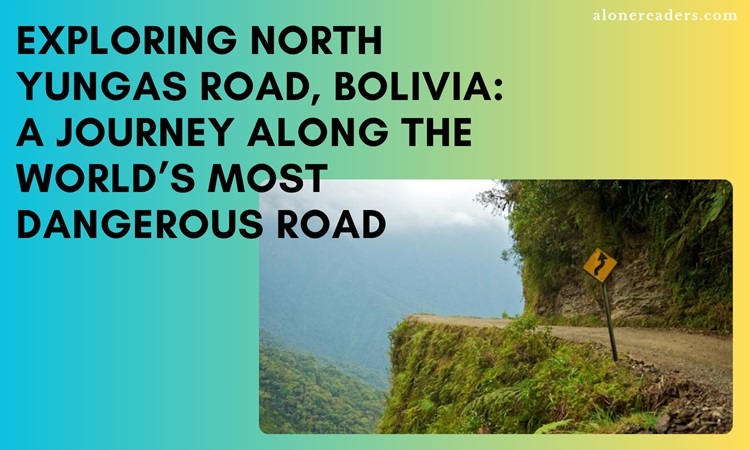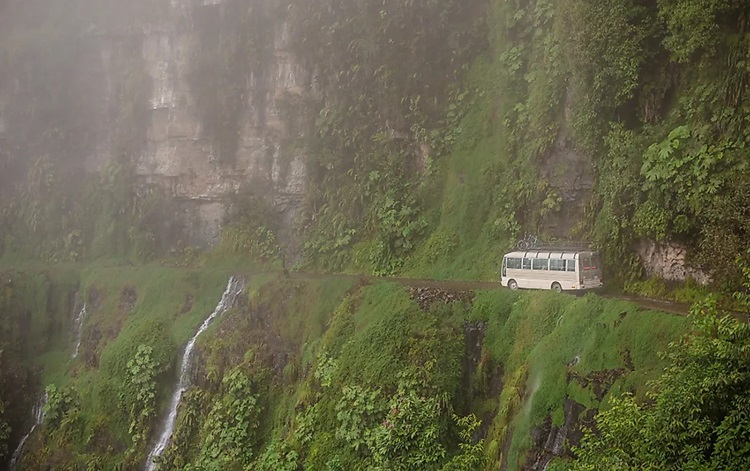
Nestled in the heart of Bolivia, the North Yungas Road, also infamously known as the Road of Death, is a stretch of highway that both terrifies and mesmerizes. This road has earned its ominous nickname due to its treacherous path, snaking through the Amazon rainforest and offering both perilous challenges and breathtaking views to those who dare to traverse it. Originally constructed in the 1930s, it was built by Paraguayan prisoners during the Chaco War and has since become a notorious route for thrill-seekers and adventurers worldwide.
Spanning about 60 kilometers, the road connects the Bolivian capital of La Paz to the Yungas region. Its narrow path, often no wider than 3.2 meters, hugs steep cliffs and features hairpin turns with no guardrails to protect vehicles from the abyss below. The road climbs to around 4,650 meters at La Cumbre pass and then makes a steep descent to the town of Coroico, situated at an altitude of around 1,200 meters. This dramatic change in altitude leads to a variety of ecosystems, from snow-capped peaks to lush rainforest, all within a relatively short distance.

North Yungas Road, Bolivia | Photo: worldatlas.com
The North Yungas Road's infamy grew during the era when it was the only route between La Paz and the Yungas region. Before modern improvements, it was notoriously dangerous due to its narrowness, lack of guardrails, and frequent fog and rain, which made the gravel and dirt road slippery and treacherous. Landslides and tumbling rocks added to the danger, and vehicles, often overloaded buses and trucks, would sometimes slip off the edge, resulting in numerous fatalities annually.
Despite its dangers, the road has become a popular tourist attraction, particularly for mountain biking enthusiasts. The thrill of navigating this hazardous route, coupled with the stunning scenery of the Andes Mountains, attracts thousands of adventurous tourists every year. Several tour operators in La Paz offer guided bike tours, providing an adrenaline-packed experience along with safety equipment and support vehicles.
The allure of the North Yungas Road is not solely in its perilous path but also in the beauty and cultural richness it encompasses. The road winds through a variety of landscapes, offering views of towering Andean peaks, cloud forests, and cascading waterfalls. Travelers also get a glimpse of rural Bolivian life, as the road passes through small villages where the way of life has remained largely unchanged for centuries.
In response to the road's dangers, the Bolivian government opened a new, modern road in 2006, which includes two lanes, drainage systems, and guardrails, making the journey between La Paz and Coroico much safer. The new road has significantly reduced traffic on the North Yungas Road, thereby decreasing the number of accidents. However, the original road remains in use by locals and adventurous tourists, maintaining its reputation as one of the world's most dangerous roads.
Environmental conditions along the North Yungas Road add to its challenges. The climate can change rapidly, with thick fog, heavy rains, and dust reducing visibility. The road surface, being mostly unpaved, becomes muddy and slippery during the rainy season, increasing the risk of accidents. Despite these conditions, the road has a magnetic appeal to adventurers seeking to test their limits against nature's obstacles.
The cultural significance of the road is also noteworthy. Along the route, travelers can witness small memorials marking spots where vehicles have fallen, serving as a somber reminder of the road's deadly history. These memorials are often adorned with flowers and tokens left by locals and travelers alike, paying homage to those who lost their lives on this perilous path.
The North Yungas Road stands as a symbol of human tenacity and the relentless pursuit of connection in even the most inhospitable environments. It's a testament to Bolivia's diverse landscapes, from the dizzying heights of the Andes to the lush depths of the Amazon rainforest. The road's history, coupled with its present-day use as both a transportation route and a tourist destination, adds layers to its already complex narrative.
In conclusion, the North Yungas Road in Bolivia is much more than just a dangerous path; it is a journey through history, culture, and natural beauty. It highlights the daring spirit of humans in their quest to conquer and coexist with nature. For those brave enough to navigate its treacherous turns, the Road of Death offers an unforgettable experience, blending adrenaline, awe, and reverence for the power of the natural world.